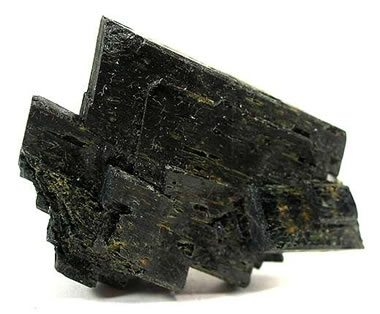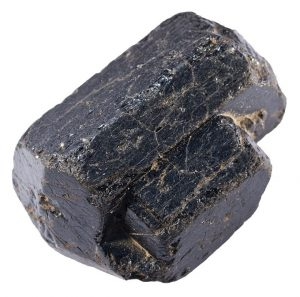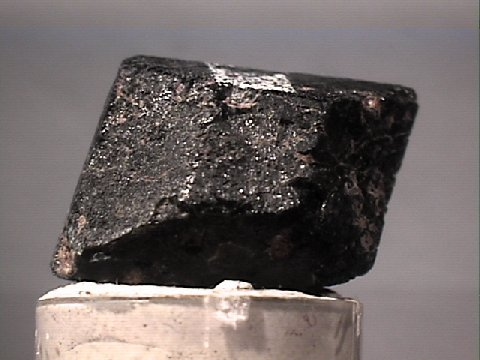Pyroxene



augite fassaite
augite pyroxene mineral
Augite
Pyroxene is a set of essential rock-forming inosilicate minerals discovered in many igneous and metamorphic rocks. Pyroxenes have the general components is XY(Si,Al)2O6. Although aluminium substitutes extensively for silicon in silicates consisting of feldspars and amphiboles, the substitution occurs only to a confined extent in most pyroxenes. They proportion a not unusual structure which include single chains of silica tetrahedra. Pyroxenes that crystallize in the monoclinic gadget are called clinopyroxenes and those that cystallize within the orthorhombic machine are known as orthopyroxenes.
Contents
- Nomenclature
- Pyroxene Group Minerals
- Physical Properties of Pyroxene Minerals
- Physical Properties of Augite
- Optical Properties of Augite
- Optical Properties of Orthopyroxene (Opx) Mineral
- Origin and Occurrence
- Distribution of Augite
- References
Nomenclature

The nomenclature of the calcium, magnesium, iron pyroxenes.
The chain silicate structure of the pyroxenes offers a good deal flexibility inside the incorporation of various cations and the names of the pyroxene minerals are ordinarily described by means of their chemical composition. Pyroxene minerals are named in keeping with the chemical species occupying the X (or M2) web page, the Y (or M1) web site, and the tetrahedral T site. Cations in Y (M1) web site are intently bound to 6 oxygens in octahedral coordination. Cations within the X (M2) web site can be coordinated with 6 to eight oxygen atoms, depending at the cation length. Twenty mineral names are recognized with the aid of the International Mineralogical Association’s Commission on New Minerals and Mineral Names and a hundred and five formerly used names had been discarded (Morimoto et al., 1989).

The nomenclature of the sodium pyroxenes
In assigning ions to sites, the simple rule is to work from left to proper in this desk, first assigning all silicon to the T web page after which filling the web site with the ultimate aluminium and ultimately iron(III); extra aluminium or iron can be accommodated in the Y web site and bulkier ions at the X website. Not all the resulting mechanisms to achieve charge neutrality comply with the sodium instance above, and there are numerous alternative schemes:
- Coupled substitutions of 1+ and three+ ions on the X and Y websites respectively. For instance, Na and Al give the jadeite (NaAlSi2O6) composition.
- Coupled substitution of a 1+ ion at the X site and a combination of same numbers of two+ and 4+ ions at the Y web page. This results in e.G. NaFe2+zero.5Ti4+0.5Si2O6.
- The Tschermak substitution where a 3+ ion occupies the Y web site and a T site leading to e.G. CaAlAlSiO6.
Pyroxene Group Minerals
Clinopyroxenes (monoclinic; abbreviated CPx)
Aegirine, NaFe3+Si2O6
Augite, (Ca,Na)(Mg,Fe,Al,Ti)(Si,Al)2O6
Clinoenstatite, MgSiO3
Diopside, CaMgSi2O6
Esseneite, CaFe3+[AlSiO6]
Hedenbergite, CaFe2+Si2O6
Jadeite, Na(Al,Fe3+)Si2O6
Jervisite, (Na,Ca,Fe2+)(Sc,Mg,Fe2+)Si2O6
Johannsenite, CaMn2+Si2O6
Kanoite, Mn2+(Mg,Mn2+)Si2O6
Kosmochlor, NaCrSi2O6
Namansilite, NaMn3+Si2O6
Natalyite, NaV3+Si2O6
Omphacite, (Ca,Na)(Mg,Fe2+,Al)Si2O6
Petedunnite, Ca(Zn,Mn2+,Mg,Fe2+)Si2O6
Pigeonite, (Ca,Mg,Fe)(Mg,Fe)Si2O6
Spodumene, LiAl(SiO3)2
Orthopyroxenes (orthorhombic; abbreviated OPx)
Hypersthene, (Mg,Fe)SiO3
Donpeacorite, (MgMn)MgSi2O6
Enstatite, Mg2Si2O6
Ferrosilite, Fe2Si2O6
Nchwaningite, Mn2+2SiO3(OH)2•(H2O)
Physical Properties of Pyroxene Minerals
Within hand specimens, pyroxene can commonly be diagnosed by using the subsequent traits: two guidelines of cleavage intersecting at kind of proper angles (approximately 87° and 93°), stubby prismatic crystal addiction with nearly square cross sections perpendicular to cleavage guidelines, and a Mohs hardness among five and seven. Specific gravity values of the pyroxenes variety from about three.0 to four.Zero. Unlike amphiboles, pyroxenes do not yield water when heated in a closed tube. Characteristically, pyroxenes are darkish green to black in colour, however they can range from darkish inexperienced to apple-green and from lilac to colourless, depending at the chemical composition. Diopside stages from white to mild inexperienced, darkening in color because the iron content increases. Hedenbergite and augite are generally black. Pigeonite is greenish brown to black. Jadeite (see photograph) is white to apple-inexperienced to emerald-green or mottled white and inexperienced. Aegirine (acmite) bureaucracy lengthy, slender prismatic crystals which are brown to green in color. Enstatite is yellowish or greenish brown and sometimes has a submetallic bronzelike lustre. Iron-wealthy ferrosilite orthopyroxenes range from brown to black. Spodumene is colourless, white, grey, purple, yellow, or green. The gem types are a clear lilac-coloured type called kunzite, whilst the clean emerald-green type is called hiddenite.
Physical Properties of Augite
| Chemical Classification | A single chain inosilicate |
| Color | Dark green, black, brown |
| Streak | White to gray to very pale green. Augite is often brittle, breaking into splintery fragments on the streak plate. These can be observed with a hand lens. Rubbing the debris with a finger produces a gritty feel with a fine white powder beneath. |
| Luster | Vitreous on cleavage and crystal faces. Dull on other surfaces. |
| Diaphaneity | Usually translucent to opaque. Rarely transparent. |
| Cleavage | Prismatic in two directions that intersect at slightly less than 90 degrees. |
| Mohs Hardness | 5.5 to 6 |
| Specific Gravity | 3.2 to 3.6 |
| Diagnostic Properties | Two cleavage directions intersecting at slightly less than 90 degrees. Green to black color. Specific gravity. |
| Chemical Composition | A complex silicate. (Ca,Na)(Mg,Fe,Al)(Si,Al)2O6 |
| Crystal System | Monoclinic |
| Uses | No significant commercial use. |
Optical Properties of Augite

Augite under the microscope
| Type | Anisotropic |
| Crystal Habit | Grains often anhedral; May be granular, massive, columnar or lamellar |
| Color / Pleochroism | x=pale green or bluish green y=pale greenish, brown, green or bluish green z=pale brownish green, green or yellow-green |
| Optical Extinction | Z : c = 35°-48° |
| 2V: | Measured: 40° to 52°, Calculated: 48° to 68° |
| RI values: | nα = 1.680 – 1.735 nβ = 1.684 – 1.741 nγ = 1.706 – 1.774 |
| Twinning | Commonly displays simple and lamellar twinning on {100} and {001}; They may combine to form a herringbone pattern. Exsolution lamellae may be present. |
| Optic Sign | Biaxial (+) |
| Birefringence | δ = 0.026 – 0.039 |
| Relief | High |
| Dispersion: | r > v weak to distinct |
Optical Properties of
Orthopyroxene (Opx) Mineral
| Property | Value |
| Formula | Enstatite (Mg end member): MgSiO3
Ferrosilite (Fe end member): FeSiO3 |
| Crystal System | Orthorhombic |
| Crystal Habit | Massive, irregular, stubby prismatic. Longitudial sections typically rectangular. |
| Hardness | 5-6 |
| Specific Gravity | 3.20-4.00 |
| Cleavage | Good cleavage on (210) Parting on (100) and (010) |
| Hand Sample Color | Brown to green/brown to green/black. |
| Streak | White to gray. |
| Color/Pleochroism | Grayish, yellowish or greenish white to olive green/brown. Pale pink to green pleochroism |
| Optic Sign | Biaxial (+ or -) |
| 2V | 50-132º |
| Optic Orientation | X = b, Y = a, Z = c |
| Refractive Indices
alpha =beta = gamma = | 1.649-1.768 1.653-1.770 1.657-1.788 0.007-0.020 |
| Max Birefringence | 0.020 |
| Elongation | parallel to c axis |
| Extinction | Parallel in longitudinal sections and symmetrical in basal sections. |
| Dispersion | r > v |
| Distinguishing Feature | Low birefringence, first order colors. Parallel extinction in longitudinal sections, pale pink to green pleochroism. Approximatly 90º cleavage planes. Thin irregular and wavy lamellae common. |
| Associated Minerals | Feldspars, clinopyroxene, garnet, biotite and hornblende. |
| Editors | Elizabeth Thomas (2003), Andrea Gohl (2007) and Emma Hall (2013). |
| References | Introduction to Mineralogy, William D. Nesse, 2000. Introduction to Optical Mineralogy, William D. Nesse, 1991. Minerals in Thin Section, Dexter Perkins and Kevin R. Henke. |
Origin and Occurrence
Minerals in the pyroxene institution are plentiful in each igneous and metamorphic rocks. Their susceptibility to both chemical and mechanical weathering makes them a unprecedented constituent of sedimentary rocks. Pyroxenes are labeled as ferromagnesian minerals in allusion to their excessive content of magnesium and iron. Their conditions of formation are almost completely constrained to environments of high temperature, high pressure, or each. Characteristically the extra not unusual pyroxenes are found in mafic and ultramafic igneous rocks wherein they’re related to olivine and calcium-wealthy plagioclase and in high-grade metamorphic rocks consisting of granulites and eclogites. Enstatite, clinoenstatite, and kosmochlor arise in meteorites.
Distribution of Augite
Widespread; only a few classic localities, much studied or providing ¯ne examples, are listed.
- From Arendal, Norway.
- In Italy, from Vesuvius, Campania; around Frascati, Alban Hills, Lazio; on Mt. Monzoni, Val di Fassa, Trentino-Alto Adige; at Traversella, Piedmont; and on Mt. Etna, Sicily.
- Around the Laacher See, Eifel district, Germany.
- On the Azores and Cape Verde Islands. In Canada, from Renfrew and Haliburton Cos., Ontario; at Otter Lake, Pontiac Co., Quebec; and many other localities.
- In the USA, from Franklin and Sterling Hill, Ogdensburg, Sussex Co., New Jersey; and at Diana, Lewis Co., and Fine, St. Lawrence Co., New York. From Tomik, Gilgit district, Pakistan. At Kangan, Andhra Pradesh, India.


Leave a Reply
Want to join the discussion?Feel free to contribute!